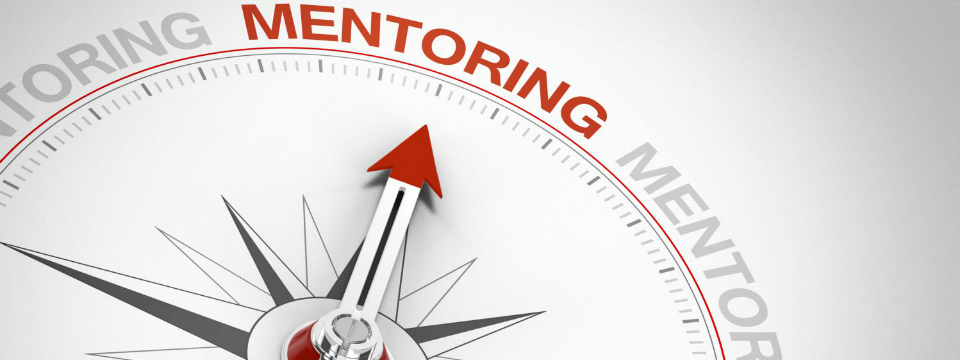Want your Kid (or Mentee) to Learn. Something New? Sign Yourself Up, Too
How taking on unfamiliar challenges alongside my daughter benefits us both.
By Tom Vanderbilt, Reprinted from The New York Times
One of the roles that new parents soon find themselves in — even as they are still learning how to be a parent — is that of teacher. Suddenly, in the eyes of a child, you’re a math whiz, an authority on shoelace tying and a near-professional-caliber tosser of footballs.
But there comes that inevitable moment when you decide your child might enjoy learning something that you actually do not know how to do. And so you enroll them in an after-school art or coding class (often online, these days); sign them up for a weekend soccer or dance program; or, if you have the means, maybe even hire a tutor or coach.
A realization dawned on me one weekend afternoon as I sat scrolling through my phone poolside during my daughter’s weekly swim lesson: I couldn’t remember the last new skill I had actually tried to learn. Here I was, pitching to my 4-year-old the benefits of broad learning, of plunging in — purely for the sake of enjoyment and discovery. Meanwhile I had settled into a fairly staid midlife routine, clinging on to the few guitar chords I’d learned decades ago or the passable Spanish I’d picked up in college.
And so I made a promise to myself: When my daughter began to learn some new skill, I would too; when possible, we’d take on the same challenge — and I’d become a fellow beginner (with some 40 years of life experience on her). Soon, her chess teacher became my chess teacher; her weeklong summer surf camp became an excuse for me to give it a go on the side; and when she expressed an interest in indoor rock climbing, I too donned a harness.
As it turns out, there are any number of activities where children can not only be ideal learning partners, but can actually exceed the abilities of adults. Colleen Koll, a mother of four in Minnesota, noted that when her family took up birding a few years ago — she called it “our version of home-school Pokémon GO” — she was “astounded by how quickly our youngest son became our walking database of bird facts, identifying features, and song knowledge.” When she and her husband went out alone, they were, she said, “operating at a deficit.”
My own idea was simple: Not only would this be a great bonding experience — and just fun for me — but I could model the act of learning itself. “Children pay more attention to what they see than what they are told,” said Deborah Stipek, a professor of education at Stanford University. She stressed the importance of modeling, using the archetypal negative example of “the father watching TV and telling his child to go ‘read a book.’” Parents, she said, “need to establish a learning culture in their home — not just issue commands.”
One of the potential virtues of learning something new along with your child is that you are, at some point, likely to struggle. And that itself has benefits, suggested Julia Leonard, a postdoctoral fellow at the University of Pennslyvania who focuses on children’s learning. In a series of experiments, Dr. Leonard and colleagues found that the more time adults spent successfully working through a problem (like getting a toy out of a box or solving a simple puzzle), the longer young children in their presence were willing to spend on the task.
Because children are often taught by adults who have already mastered a particular skill, Dr. Leonard noted, “children may assume most things come easily to adults.” Which was certainly not the case as I, for example, struggled to ascend even the easiest route at the indoor climbing gym.
But Dr. Leonard also identified a potential problem with parental involvement: Children seem to persist less when adults “take over.” And how parents do like to take over! When she initially ran the study, in which young children would try to solve the puzzles, she neglected, she said, one variable: “How many parents don’t like watching their children struggle.” She had to exclude about 25 percent of children from the study because of parents lending a hand.
So here’s a cautionary note when you’re co-learning with your child: They don’t necessarily want another coach. Kathleen Jen, a 52-year-old mother of two boys (now college-aged) in the Chicago suburb of Glenview, was inspired to pick up karate about a decade ago after taking her sons to classes. On a whim, the head of the dojo began offering daytime courses for parents. Those classes ended, but Ms. Jen was hooked. “You’re learning something that you’ve been watching for two years,” she said. After the daytime classes ended, she moved to the evening classes alongside her older son, Matthew, then 6 years old. “At the time he was three belts ahead,” she said.
While you might think a child would chafe at having his mom or dad in class, she said it worked for largely one reason: “I never corrected him.” Her own father, she said, was her high school team’s soccer coach. “I don’t remember him giving as much feedback as I see parents in our generation give kids — even if they don’t know anything about it.”
Being a learning model means parents sometimes need to embrace a childlike willingness to learn, which is not always so easy. Susan Darrow, the chief executive of Music Together, a worldwide early music and movement program headquartered in New Jersey, said that getting parents out of their comfort zone can be a challenge. “When a parent and a toddler come to a class, we know that the most important teacher for that child is the parent,” she noted. “But that means the most important student, for us, is the parent.”
Because the emphasis is on playful, non-formal, experiential learning, she said, the program found a “backdoor” way to reach parents. “We give them a powerful reason to be musical, which they don’t realize,” she said. “By singing and dancing with their child every week, they’re supporting their own musicality.” Many people, she noted, are embarrassed to express themselves musically, especially as beginners. But since they’re doing it for their child, they tend to forget their inhibitions.
However intuitively positive it might seem to learn something new alongside one’s child, there’s a paucity of research into any possible benefits — the question drew blanks from several researchers I contacted. Nor is it easy to find programs — though they do exist — catering to families learning together.
There is one approach that, from its inception, posited the parent as a kind of model co-learner: the “Suzuki method,” named for its founder, the Japanese violinist and teacher Shinichi Suzuki. Beth Cantrell, who teaches cello using the method and is the board chair for the Suzuki Association of the Americas, said that a parent learning an instrument alongside their child is not only modeling the act of learning, but “it gives the parent some respect for how difficult the child’s task is.”
And who knows, maybe it’s something that will stick, for parent and child. Ms. Jen, the Illinois karate mom, went on to become a black belt, like her son. In a nice twist, when she competed a few years ago in a master’s level event, her son was in the audience. After her team won gold, her son asked, “Don’t you just love competing?” She said: “No, I hate competing. I love the training.” To which he replied: “Mom, that’s so backwards.”
In my own competitive outings with my daughter, I didn’t fare quite so well. Let’s just say it takes a big person to be crushed by small kids in a mixed-age chess tournament. But in learning and experiencing new things together, we had not only temporarily shed our traditional roles, we had formed a stronger connection, and found strengths in each other.
Tom Vanderbilt is the author of “Beginners: The Joy and Transformative Power of Lifelong Learning,” published by Knopf.
Correction: April 21, 2021
An earlier version of this article misstated the job title and employer of Julia Leonard. Dr. Leonard is currently a postdoctoral fellow at the University of Pennsylvania, not a researcher at the Massachusetts Institute of Technology. The article also misstated a statistic: Dr. Leonard excluded about 25 percent of the subjects from a study, not one-third.
To access the resource, please click here.










